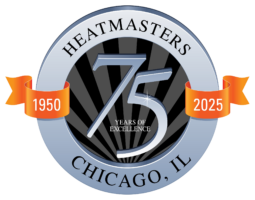“The greatest contribution to civilization in this century may well be air-conditioning—and America leads the way.” –British scholar S.F. Markham, 1947.
1700s
Back track to 1758, when Benjamin Franklin and Cambridge University professor John Hadley discover that evaporation of alcohol and other volatile liquids that evaporate faster than water can cool down an object enough to freeze water.
1800s
In 1820 Michael Faraday made the same discovery as Franklin and Hadley in England when he compressed and liquefied ammonia.
Dr. John Gorrie built an ice machine that used compression to make buckets of ice and then blows air over them at the hospital he worked at in Florida. He patents this idea in 1851, but did not have the financial support to make any further progress.
After President James Garfield was shot in 1881, naval engineers built a boxy makeshift-esque cooling unit to keep him comfortable and cool. The device was filled with water-soaked cloth and a fan blows hot air overhead and keeps cool air closer to the ground. It cooled the room temperature by 20 degrees, however, it used half-million pounds of ice in two short months.
1900s
In 1902 Willis Carrier invents a machine that blows air over cold coils to control room temperature and humidity and keeps paper from wrinkling and the ink aligned. It is called the Apparatus for Treating Air for the Sackett-Wilhelms Lithographing and Publishing Co. in Brooklyn, N.Y. He also established the Carrier Air Conditioning Company of America to include others in his invention.
Stuart Cramer, a textile mill engineer in North Carolina, made a ventilating device that adds water vapor to the air of textile plants. In 1906, he is the first to call the process “air conditioning”.
In the Minneapolis mansion of Charles Gates in 1914, air conditioning was in-home for the first time at approximately 7 feet high, 6 feet wide and 20 feet long. In-home continued when H.H. Schultz and J.Q. Sherman invented an individual room air conditioner that sits on a window ledge in 1931—still in apartment buildings today.
By 1939 cars were air conditioned and during the post-World War II economic boom more than 1 million air conditioning units were sold in 1953 alone. Air conditioning systems have become a staple in our lives that continue to keep us cool at the office or in our bedrooms during the summer months.
Courtesy of: Popular Mechanics

